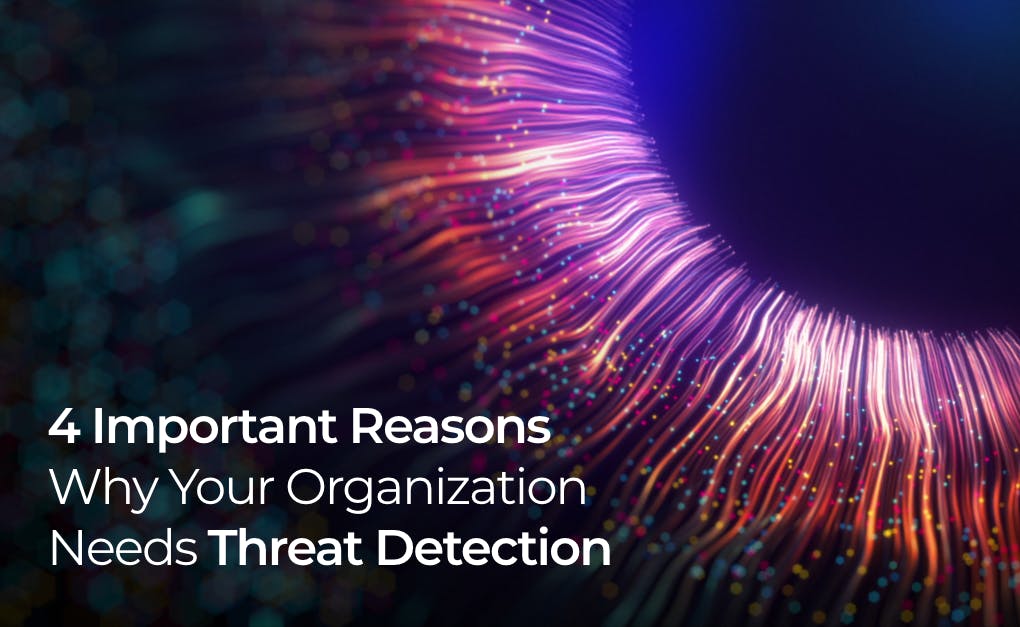Cyber threats come in many forms across industries and organizations. You’ve probably heard of the high-profile ransomware attacks the likes of Ryuk and LokiLockerhigh-profile ransomware attacks the likes of Ryuk and LokiLocker, as well as cloud data breaches stemming from credential compromise. The truth is, organizations large and small alike face the threat of regular cyber attacks. With global cyber crime costs expected to reach $10.5 trillion annually by 2025, it comes as little surprise that the risk of a cyber attack is one of the biggest business concernsrisk of a cyber attack is one of the biggest business concerns globally.
Nobody wants to be hit by a major cyber attack; nobody wants an employee to be a victim of a phishing emailphishing email. But these things happen, and preventing attacks is easier said and done. At Horangi, we preach an assume-breach mindset. This posits that all organizations will be the target of a cyber attack, and that breaches will happen. The magic behind this philosophy is what a hacker will find after the intrusion. Do they expect to find a house with open doors to rooms with precious credentials that can fetch high market value? Or might they just find themselves in a suffocatingly tiny space with security cameras locked on them? That is where threat detectionthreat detection comes in, and in this article, I’d like to address the 4 important reasons for detecting relevant security threats in a timely fashion.
Prevent or thwart attacks
You want to detect threats to prevent attacks. Sounds simple enough. Many sophisticated attacks follow a standard cyber attack path that consists of many steps. Preventing something early by detecting the indicators of a potential compromise is significantly easier than having to fix it later.
Threat detection tools today can identify faults, anomalies, and threats in network traffic. Might a user be trying to access the network from a malicious IP? Is the user trying to elevate its own privileges in an attempt to conduct data exfiltration? Is there known malware attempting to traverse the network? Modern threat detection capabilities can be augmented with Machine Learning and Deep Packet Dynamics (DPD) technologies to gain visibility into threats hidden in encrypted traffic.
If your organization is able to stop a cyber attack in its tracks, that’s ideal. Otherwise, having the ability to be alerted whenever a threat is detected can summon the blue team to be able to thwart the attack early.
Avoid costly downtime
Your business can’t tolerate any downtime, much less the major disruption a data breach or ransomware attack can cause. According to IBM, in 2021, organizations experienced the highest average cost of a data breach in 17 years at $4.24 million, rising from $3.86 million the previous year. Ransomware, system outages, and data breaches can severely damage your bottom line as well as your IT systems. That’s why preventing attacks and detecting threats early can spare a business from having to suffer downtime.
Talk to any CISO who has experienced a cyber attack and you’ll know it’s something that they will never forget — even if it didn’t cost them their job. The major disruption that comes with a data breach hurts employee morale and can be a drastic hit to a company’s reputation to its customers and partners.
Protect business-critical data
Stolen data can be an organization’s worst nightmare. Threat actors are constantly finding entry points into your network in order to gain access to privileged identities. If your cybersecurity program is properly designed, this should take the threat actor much longer to be able to gain this access.
Business-critical data may come in the form of proprietary information that drives your company’s innovation, such as trade secrets that you do not want leaked to your competitors or the public. This may also be sensitive customer data such as credit card information and Social Security data, as was seen in the 2019 Capital One data breach.
With advanced software that can pick up signs of attackers in your system, your organization will be able to contain these attacks early and protect your business-critical data. You can go one step further and write custom threat detection rules to block or restrict any attempts to attempt this business-critical data unless properly authorized — and be sure to implement Multi-Factor Authentication (MFA).
Meet compliance requirements
Is your organization required to demonstrate compliance with MAS TRMMAS TRM, SOC 2SOC 2, PCI DSSPCI DSS, ISO 27001ISO 27001, OJKOJK, HIPAA, or other regulations? Needing to prove that you are equipped with necessary threat detection capabilities is part of the latest requirements in these compliance standards. And many of these regulations mandate that organizations implement safeguards to reduce risk and maintain data integrity.
Showing that your organization has the ability to detect threats across your infrastructure, endpoints, and applications may also be an important prerequisite to work with potential business partners and customers. Because sensitive information is commonly shared across vendors, oftentimes businesses only want to work with businesses that can demonstrate a consistent commitment to data securitybusinesses only want to work with businesses that can demonstrate a consistent commitment to data security. Third party security riskThird party security risk continues to be a major problem today. Sometimes it’s not you, it’s them.
Summary
Today, modern organizations that have taken the step towards digital transformation all agree on the importance of having robust threat detection capabilities. Whether it is for partnership or cybersecurity related reasons, threat detection and prevention are critical to help organizations improve security posture.
As with all threat detection tools, false positives and non-critical security alerts are part and parcel of the job. But continue to hone your threat detection arsenal and track the new types of threats you receive as your organization grows to stay abreast of how threat actors may be planning their next move.




